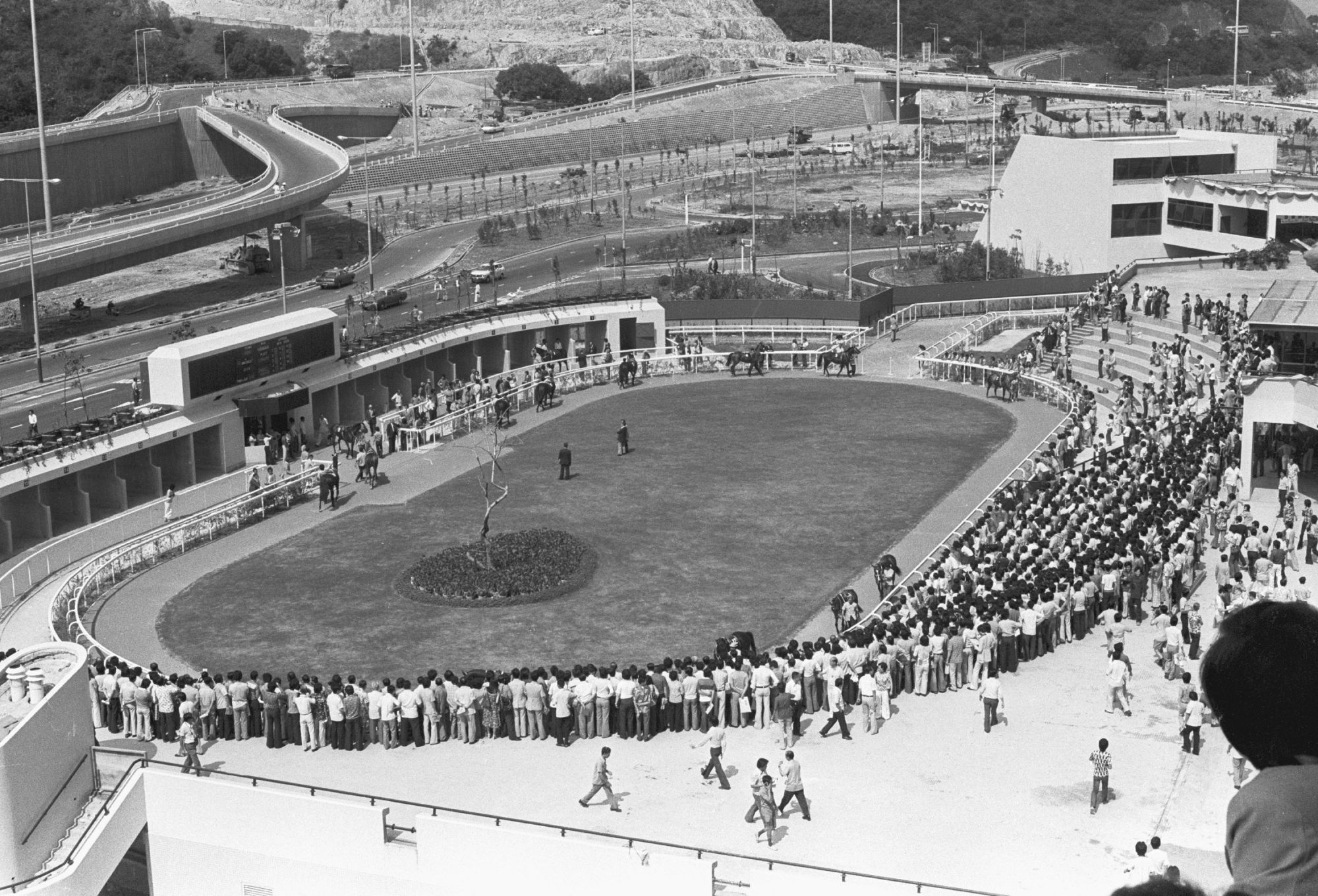Australian broadcaster and journalist Jim McGrath was the English-language voice of Hong Kong racing for 13 years in the 1970s and 1980s, combining calling races for what was then the Royal Hong Kong Jockey Club with writing articles for the South China Morning Post.
In the first of a new weekly Q&A series with Hong Kong racing personalities, Tongue Tie Off, McGrath recalls his favourite memories of working in the city, rates his successors behind the binoculars at Happy Valley and Sha Tin and reveals his thoughts about the plans sketched out for Golden Sixty, Lucky Sweynesse and Romantic Warrior over the coming months.
Why did you move from Australia to Hong Kong?
I was eager to get started as a race caller, and opportunities were scarce in Melbourne, where I was born. It was a golden age of broadcasting in Australia. Callers such as Bill Collins, Bert Bryant and Joe Brown were at the top of their trades and behind them was a line-up of potential stars ready to take their places when they stepped down. So, without much opportunity there, I decided to go to Hong Kong when that chance came. I was 21 years old, and looking back, I have no regrets about taking that chance.
What’s your favourite Hong Kong racing memory?
The opening of Sha Tin Racecourse on October 7, 1978. I was fortunate to call the first race – in English, of course – for the Royal Hong Kong Jockey Club and the television station broadcasting the races at the time. Having been going to Sha Tin in the mornings to cover trackwork for the South China Morning Post, I was there for the four years it took to build the grandstand and the racecourse, and I watched it develop over a long period of time. So it was an exciting day when they ran the first race.

What’s your favourite Hong Kong race call?
In November 1983, there was an 1,800m handicap that featured two really big names. One was the resident champion, Co-Tack, ridden by Tony Cruz. The other was the Derby winner, Football, ridden by Brian Taylor. There was a 31-pound difference in the weights – Co-Tack carried 154, and Football carried 123. It was a titanic struggle all the way up the straight. Tony on Co-Tack was giving everything, but Brian on Football wore him down to win by half a length. It was a thrilling finish. It was a memorable race for so many reasons. Tony is the legend he is. Sadly, Brian lost his life at Sha Tin only 13 months after that epic race when he fell in front of the grandstand.
How do you rate Hong Kong’s current race callers?
Mark McNamara and Tom Wood are both excellent. There’s been a long line of good callers in Hong Kong, and they uphold that distinction. Race callers grow on you. No matter where you are in the world, you get used to how the local callers call and what they’re looking for. Mark and Tom keep punters informed and entertained at all times, and Tom is a skilled judge of close finishes at Happy Valley from a tricky angle.
Who’s Hong Kong’s best active galloper, and why?
Golden Sixty, Lucky Sweynesse and Romantic Warrior – they’re all world class. My vote goes to Golden Sixty because of his sheer consistency at the highest level and his dazzling, devastating turn of foot.
How would you campaign Golden Sixty, Lucky Sweynesse and Romantic Warrior this season?
I’ve learned over the years that trainers and jockeys usually know a lot more about their horses than journalists and tipsters, so I greatly respect the decisions those horses’ connections have made.
What a battle! Hong Kong's two best duel it out with Golden Sixty lifting to win his second G1 @Citi Hong Kong Gold Cup crown! @Vincenthocy 🏆🏆#TripleCrown | #HKracing pic.twitter.com/Nf4GFRoJEE
— HKJC Racing (@HKJC_Racing) February 26, 2023
There must be a good reason why Golden Sixty’s connections have chosen not to take him to other countries, and he’s so dominant in his hometown.
In my opinion, it’s a good idea for Lucky Sweynesse to swerve The Everest. The track conditions at Randwick can vary from year to year, and there’s no knowing what surface he’d come across. His connections would have to source one of the 12 slots to get him into The Everest. Then there’d be other people involved, and he’d be obliged to run. There’d be no option to change their mind because of ground or other factors.
Romantic Warrior’s connections are encountering the difficulties many experience when travelling horses, which include foreign surroundings and feed issues. The latter has been an important factor for a lot of horses who have come from overseas to Melbourne to run. The authorities are very strict on imported feedstuffs. You have to understand and abide by local laws and conditions. It’s a very adventurous move. I commend them for being so adventurous and wish them all the best in their quest to win the Cox Plate.
What’s the best thing about Hong Kong racing?
The strength of its betting pools. In Australia and the United Kingdom, increasingly, corporate bookmakers are leading the way. It’s refreshing to bet in Hong Kong without all the restrictions sometimes applied to racing punters in other parts of the world.
More Sweynesse brilliance or not, Man looks well placed for another extension
What’s the worst thing about Hong Kong racing?
There aren’t many negatives about Hong Kong racing. It sets a remarkably high standard.
Finally, does your Hong Kong-born son, Brian, aspire to be a trainer in the city of his birth one day?
Brian is faring very well in his training career. He’s switched from Cranbourne to Pakenham in the last month, and he’s very happy with his new set-up where he has 20 horses. I’d think he’d like to train horses in Hong Kong one day, but I’m sure he’d like to win many races in Australia before that happens.



















